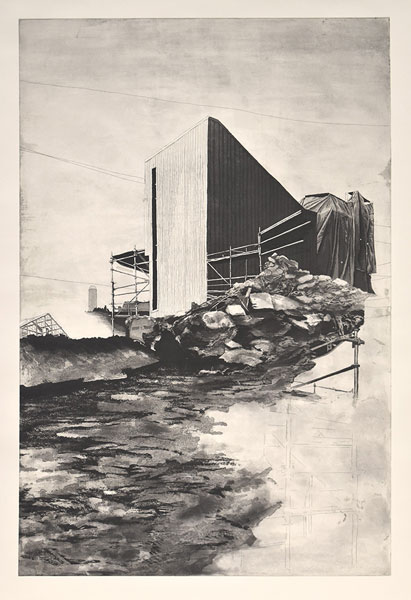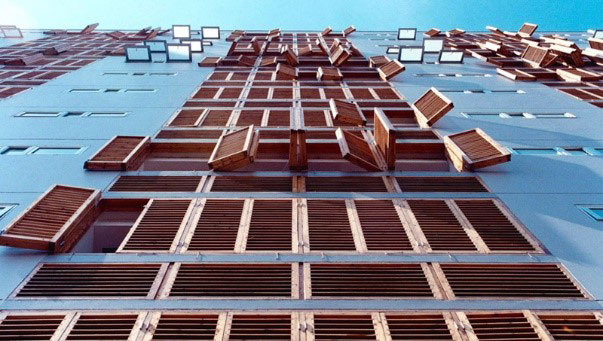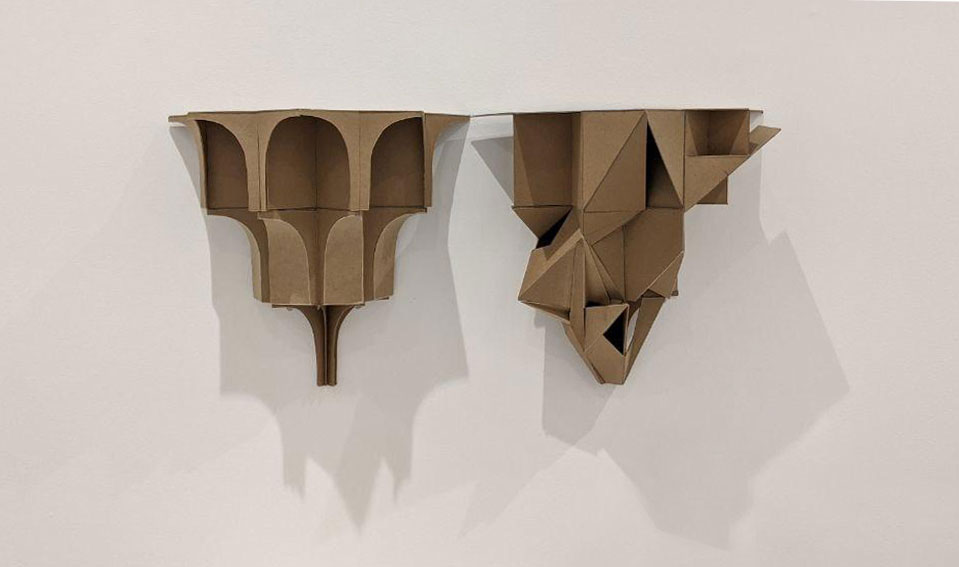B.1 Site, Setting, Structure: Architectural Identities in the Local-Global Landscape
Thu Oct 15 / 11:00 – 12:30
voice_chat expiredchair / Angela Andersen, University of Victoria
Site, setting, and structure are three architectural factors that can be examined as social documents of self-identification and community praxis. Whether a house is a machine for living or a setting where one’s ancestors dwell, or a structure sits in a considered way upon traditional territories or disregards local terrain and people, approaches to architecture in shifting contexts speak to dominant attitudes, self-presentation for communities at risk, and adaptive tactics.
The participants in this panel will examine matters of the local-global architectural landscape through case studies that probe questions of identity and the relationship of design to the occupation of space. Our session opens with a discussion of the urban experience and social development mapped through buildings as explored in the work of Canadian printmaker Alex Thompson. The second paper engages Dijia Chen’s work on the construction of “Chineseness” as understood through the contemporary, “culturally-mediated” cross-cultural designs of architect Zhang Lei. Our panel concludes with the Thirdspace possibilities of muqarnas, a transitional architectural element frequently found in Islamic architecture, as engaged by Iranian-born Canadian artist Sara Mozafari-Lorestani. The papers highlight the meeting of imagined and realised architectures, and the approaches that arise from tensions and transformations. The architecturally-based exclusion and control of communities within the social, economic and political lives of Canadian urban centres, and the global expressions of similar circumstances for a migrating population connect discussions of the meeting of global technologies and strategies with local design approaches.
Angela Andersen works with the roles played by architecture in diverse communities, using site studies and extensive oral history work. Her research with minority Islamic communities has been published in journals such as the International Journal of Islamic Architecture and RACAR. Andersen was awarded a postdoctoral fellowship at MIT with the Aga Khan Program for Islamic Architecture and received the Margaret B. Ševčenko Prize in Islamic Art and Culture for her writings on Alevi ceremonial sites in Turkey. She is currently editing a volume of essays that explores spaces of Islamic praxis beyond the confines of the mosque, based on her 2016 UAAC panel on the same subject.

Untitled 1, etching and aquatint, artist Alex Thompson (courtesy Alex Thompson)

Untitled 2, etching and aquatint, artist Alex Thompson (courtesy Alex Thompson)
B.1.1 Built Embodiment
Alex Thompson, University of Alberta
My research-creation practice posits the idea of a “built embodiment”. My print work binds together the structures and infrastructures of the post-industrial city with the human subject, mapping buildings as stages of social development. It probes the ambivalence and melancholy of this relationship. My monochromatic etchings are accumulations of brick, glass, concrete, and steel, becoming a single, hybrid structure wherein the urban architectural cycles of excavating, planning, construction, and demolition are all present. The resulting fictional space, composed of recognizable buildings that are drawn, stitched, and layered together, can also be parsed as a condensed framework that encompasses an individual’s experience of the sprawling urban environment and maps the constant change of cityscapes as if human. In doing so, it draws from and reflects on social scientific methods of documenting the urban environment.
Built upon photographic documentation, archival maps, and urban planning and architectural drawings, employing copperplate etching, photo-etching, installation, laser-engraving on transparent materials, and 3D modeling and printing, I approach the inherent intricacy of cities. These media allow a freedom of layering and overlapping individual components, while the malleability of copper enables the constant reworking, adaptation, and restating of drawn and photo-mechanical elements. My paper engages this body of work, the overlapping bodies of knowledge of the city, and the personal narratives that are formed through urban settings. I will explore a concept of architectural pathology, investigating the sprawl, decline, decay, reorganization, and reconstruction of the locality of the postindustrial urban environment.
Alex Thompson is a printmaker/artist pursuing an MFA at the University of Alberta. His work engages with the built environment, reflecting on the timeliness/timelessness of architecture, how structures shape the individuals occupying them, and the compression of distances enabled by technology. He has exhibited at The Robert McLaughlin Gallery (Oshawa), Open Studio (Toronto), Megalo Print Studio + Gallery (Kingston, AU), Nuit Blanche (Toronto), and The Power Plant Gallery (Toronto). He has participated in residencies at the Banff Centre and Centre[3] (Hamilton), and has worked as a printer/instructor at Open Studio and technical assistant in printmaking at OCAD University. Thompson holds a BFA from OCAD University in Toronto.

Taoyuan Postgraduates Dormitory of Nanjing University, China, architect Zhang Lei, (courtesy AZL Architects)
B.1.2 The Signature Facade: the Construct of Contemporary Chineseness in Cross-Cultural Circulation of Imagery Representations
Dijia Chen, University of Virginia
This paper traces the imagery representations of an early project designed by Zhang Lei, an independent architect considered as one of the representatives of contemporary Chinese architects since the early 2000s. Though Zhang was barely known in China during the 1990s, his project, hybridizing European modernist style and Chinese architectonic elements, quickly caught the attention of westerners during his first exhibition abroad. With many commentators critiquing the burgeoning tension between the traditional and the contemporary, the indigenous and the universal, the East and the West, Zhang’s work was conceived across geographical borders based entirely on photographic representations of the facade. The wide circulation, repetitive reproduction and multiple interpretations in news reports, online discussions, and professional critiques have won quick reputation for the architect. Though the building itself was more immature than satisfactory, it became a signature manifestation that repetitively appeared in Zhang’s other designs in the following years. The culturally-mediated images of the facade in turn shaped the professional career of the architect by creating cross-cultural discourse defining the architectural identity of contemporary “Chineseness.”
This research problematizes the construct of contemporary Chinese architecture in cross-cultural power dynamic, in which the complex body of architecture is negotiated and conceived in displaced photographic representations. By analyzing the texts and narratives that decipher the image of the facade from different cultural backgrounds, this paper unpacks how the European curators legitimized the facade as “contemporary” by identifying the architectural orders comparable to the German Modernism, and identified it as “Chinese” by relating the tectonic manifestations to Orientalist imaginaries. Further tracing the impact of this « signature facade, I also argue that the project was, consciously or unconsciously, designed as an exhibitionary building, which further informs of the state of design specific to the contemporary Chinese architects during the early 2000s.
Dijia Chen is a third-year doctoral student in the Constructed Environment, School of Architecture, University of Virginia. Her work examines transnational exhibitionary events as the shaper of contemporary Chinese architecture, and evaluates architectural production as a mediated cultural phenomenon under global power dynamic. Her research interest lands at the intersection of curatorial studies, transcultural communication studies and contemporary Chinese architecture. She has actively participated in preliminary curatorial works and on-site coordination works in architectural exhibitions in Berlin, Shanghai and Boston. She has received Luce/ACLS Predissertation Grant in Chinese Studies, the Latrobe Chapter Grant from the Society of Architectural Historians, and several other fellowships. Three of her papers are currently under review and will be published online and in book volumes.

Prototype 1 (muqarnas), artist Sara Mozafari (courtesy Sara Mozafari)

Prototype 2 (muqarnas), artist Sara Mozafari (courtesy Sara Mozafari)
B.1.3 Muqarnas and Disoriented Spatial Memories
Sara Mozafari-Lorestani, OCAD
Muqarnas and Disoriented Spatial Memories aims to define a method of visualization in which the possible relationship between space, memory, displacement, and identity can be exemplified. Through immigration, art, and architecture lenses, it addresses how individuals could move back and forth between the live and the mind world to create an imaginary world to reconfigure their situation in society and to develop a sense of belonging. It examines the potential of an art exhibition featuring an installation to express notions about how displacement and memory impacts on identity and social relations through the Islamic architectural element of muqarnas. The paper will contextualize the installation within an understanding of muqarnas as a geometrical and spatial object that can carry autobiographical and cultural stories and memories. It will outline how muqarnas is significantly capable of conversion, innovation, and transformation while it retains loyal to its origin.
Referring to Heidegger and Ponty, the paper will discuss how humans' consciousness is entangled in and shaped by the world around them. It argues how it is impossible for one to distinguish self-being from his/her place in time, history, and geographical location outside of the material and embodied world. Inspired by Soja, Lefebvre, and the artist's self-experience, the paper defines three different spaces: The Firstspace, the real space that a person lives in it at present; the Secondspace, the memory- attached unattainable space where one used to reside that travels with the individual everywhere they go as long as the associated memories exist; and the Thirdspace, an imaginary space that we create in our mind based on the First and Second space to understand our position in society.
Toronto based interdisciplinary artist Sara Mozafari, was born in 1981, in Tehran, Iran. Having grown up through the war between Iran and Iraq and the suppression of the political and social activists, religious minorities, and women, social issues became the primary concern in her life, and they reflected on her artworks. After immigrating to Canada in 2006, her factual perceptions from her home country narrowed to the memories she has and the news she is receiving from media on an everyday basis. She received her Honors Bachelor of Arts in Architectural Studies from the University of Toronto with distinction in 2017. She is currently studying Interdisciplinary Master's in Arts, Media, and Design at OCAD University. Sara's current practice primary focus is on the idea of the recognition of space, displacement, and memory, in diverse aspects of human identity, and social relations.



